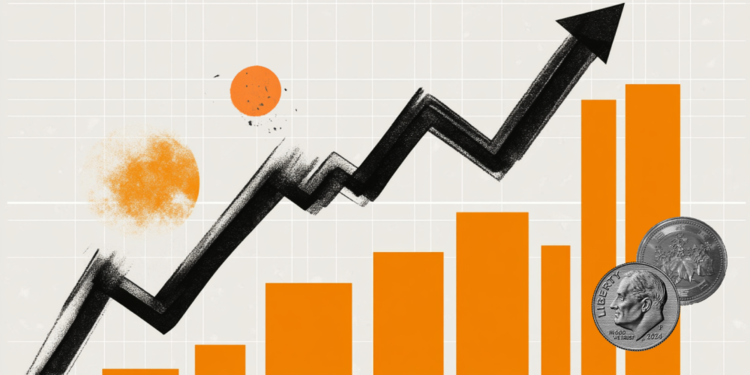- NZD/USD rebounds after diving to a more than two-year low of 0.5516, but the outlook is still bearish.
- US President Trump has imposed a 25% tariff on Canada and Mexico and 10% on China.
- This week, investors will pay close attention to the US NFP data for January.
The NZD/USD pair pares some intraday losses after nosediving to an over-two-year low near 0.5516 in Monday’s European session. The pullback move in the Kiwi pair after a sharp downside is expected to be capitalized by market participants for adding shorts as the imposition of 10% tariffs on China by United States (US) President Donald Trump has dampened the appeal of the New Zealand Dollar (NZD).
The Kiwi dollar is impacted by an economic change in China as New Zealand (NZ) is one of the leading trading partners of China.
Signs of muted trading activities in the NZ economy with China would result in further economic contraction. Such a scenario would force the Reserve Bank of New Zealand (RBNZ) to continue reducing its Official Cash Rate (OCR) further.
With the announcement of 10% tariffs on China and, 25% on Canada and Mexico, Donald Trump has started a global trade war, which is expected to boost inflationary pressures across the globe. The scenario has resulted in a significant weakness in the appeal of risk-perceived assets. Meanwhile, the appeal of the US Dollar (USD) has strengthened, with the US Dollar Index (DXY) refreshing a two-week high near 109.90.
Going forward, the US Dollar will be influenced by an array of US economic data, notably the Nonfarm Payrolls (NFP), which will show the current status of the labor market. Signs of strong job data would boost expectations that the Federal Reserve (Fed) will keep interest rates at their current levels for longer.
New Zealand Dollar FAQs
The New Zealand Dollar (NZD), also known as the Kiwi, is a well-known traded currency among investors. Its value is broadly determined by the health of the New Zealand economy and the country’s central bank policy. Still, there are some unique particularities that also can make NZD move. The performance of the Chinese economy tends to move the Kiwi because China is New Zealand’s biggest trading partner. Bad news for the Chinese economy likely means less New Zealand exports to the country, hitting the economy and thus its currency. Another factor moving NZD is dairy prices as the dairy industry is New Zealand’s main export. High dairy prices boost export income, contributing positively to the economy and thus to the NZD.
The Reserve Bank of New Zealand (RBNZ) aims to achieve and maintain an inflation rate between 1% and 3% over the medium term, with a focus to keep it near the 2% mid-point. To this end, the bank sets an appropriate level of interest rates. When inflation is too high, the RBNZ will increase interest rates to cool the economy, but the move will also make bond yields higher, increasing investors’ appeal to invest in the country and thus boosting NZD. On the contrary, lower interest rates tend to weaken NZD. The so-called rate differential, or how rates in New Zealand are or are expected to be compared to the ones set by the US Federal Reserve, can also play a key role in moving the NZD/USD pair.
Macroeconomic data releases in New Zealand are key to assess the state of the economy and can impact the New Zealand Dollar’s (NZD) valuation. A strong economy, based on high economic growth, low unemployment and high confidence is good for NZD. High economic growth attracts foreign investment and may encourage the Reserve Bank of New Zealand to increase interest rates, if this economic strength comes together with elevated inflation. Conversely, if economic data is weak, NZD is likely to depreciate.
The New Zealand Dollar (NZD) tends to strengthen during risk-on periods, or when investors perceive that broader market risks are low and are optimistic about growth. This tends to lead to a more favorable outlook for commodities and so-called ‘commodity currencies’ such as the Kiwi. Conversely, NZD tends to weaken at times of market turbulence or economic uncertainty as investors tend to sell higher-risk assets and flee to the more-stable safe havens.

























